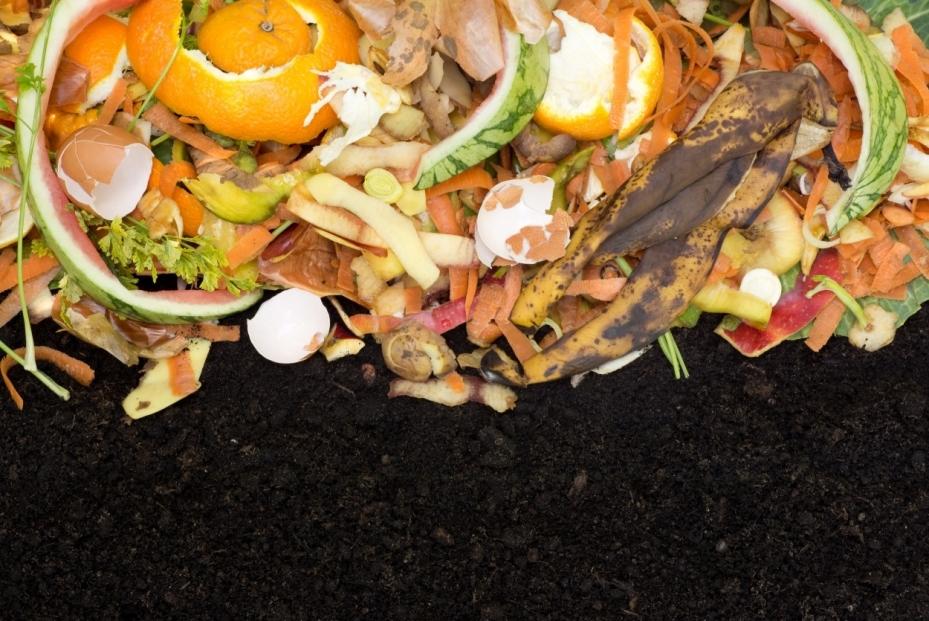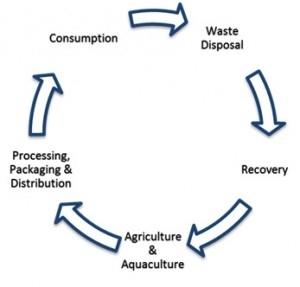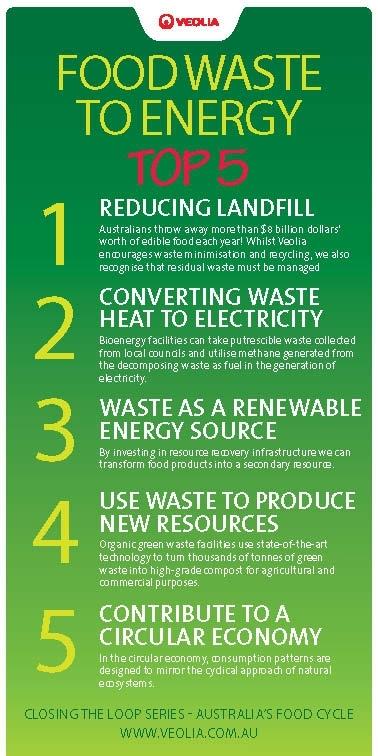
The Food Cycle

We live in an increasingly food insecure world yet wastage in the first world is at epic rates. Challenges from urbanisation, consumerism, population growth, competition for resources and environmental degradation all plague the production of food; similarly, in light of recent figures, our consumption and wasteful disposal habits need to be addressed.
Australians throw away more than $8 billion dollars’ worth of edible food each year!
We can all play a pivotal role in reducing food waste. Some of Veolia’s most advanced facilities work specifically on the recovery of food and organic materials.
Plugging in Veolia’s resource recovery solutions – waste to energy
Veolia owns and operates waste to energy infrastructure throughout the region. Facilities including Woodlawn and TiTree Bioenergy facilities take putrescible waste collected from council regions in NSW and QLD and utilise methane generated from the decomposing waste as fuel in the generation of electricity. Whilst Veolia encourages waste minimisation and recycling, we also recognise that residual waste must be managed. This residual waste, through our network of bioenergy facilities and technologies, is helping to create a viable source of energy. Theoretically, returning a valuable product back to the very homes where the waste used to create this energy was generated. Want to learn more?
By investing in resource recovery infrastructure we can transform food products into a secondary resource. In doing so, we can effectively assist in closing the loop of the food cycle, and delivering environmental and social outcomes to the community.
We cannot fulfil this ambition without the support of individuals, business and community. We can all take an active role in effectively managing our consumption and disposal of food.
Top 5 waste to energy tips to close the loop

Want to plug in your thoughts and ideas? Keep the conversation going on Twitter and LinkedIn.

